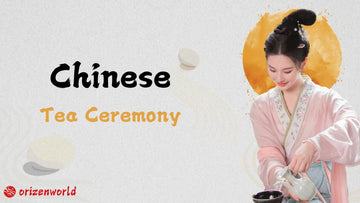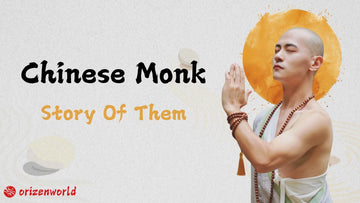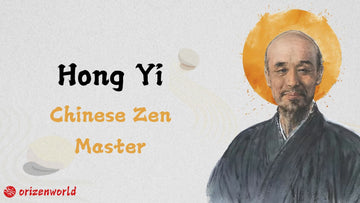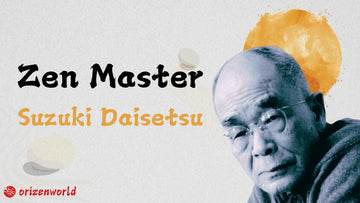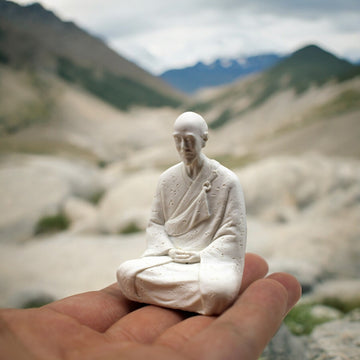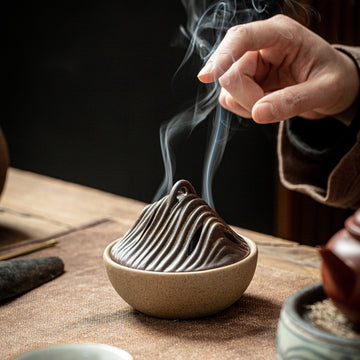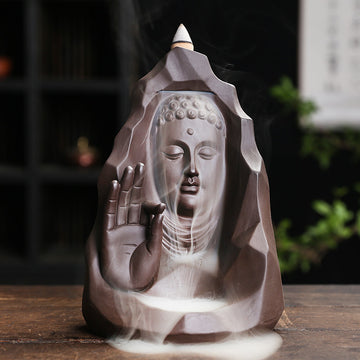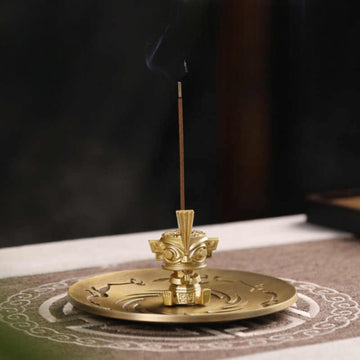Chinese tea culture is renowned worldwide, deeply intertwined with the nation's rich history and global influence. For centuries, China's connections with the world have introduced countless people to its traditional tea ceremonies. Foreigners living in China for education or business often experience this unique cultural aspect, particularly businesspeople, who are almost certain to be invited to share tea as a gesture of hospitality and respect.
But what makes Chinese tea culture so deeply ingrained in its people's way of life? Why has this tradition endured for thousands of years? These questions offer a glimpse into the heart of a culture that values harmony, connection, and mindfulness.
In today’s article, we’ll uncover the essence of Chinese tea culture, exploring its historical roots and its enduring significance in modern life.
The origins of Chinese tea culture trace back thousands of years, starting with the legendary Shennong period, where tea is believed to have been discovered. Shennong, revered as the deity of agriculture, is said to have used tea for medicinal purposes. This early use of tea as a health tonic laid the foundation for its deep cultural significance in Chinese society.

Shennong, a figure from ancient China, is legendary for discovering hundreds of medicinal herbs, including tea leaves, which played a significant role in traditional Chinese medicine and culture.
By the Western Zhou period, tea had already become an important product for trade. The state of Ba, known for its tea cultivation, even paid tribute to the Zhou dynasty with tea, highlighting its growing importance in both cultural and political exchanges. During the Han dynasty, tea consumption became more widespread, particularly in regions like Changsha, where the practice of drinking tea was documented in tomb artifacts.
The Tang dynasty marked a turning point in the evolution of tea culture, with tea becoming an essential part of social rituals. The famous tea expert Lu Yu’s "The Classic of Tea" (茶经) written in 780 AD provided a detailed guide to tea preparation, establishing the foundation for tea ceremonies. The use of specialized tea utensils and careful preparation became symbols of refinement and sophistication, especially among the elite.
During the Song and Yuan dynasties, tea culture continued to evolve. The Song dynasty, in particular, saw the refinement of tea preparation techniques and the emergence of tea-related literature. Tea drinking became an integral part of daily life for all social classes, from the imperial courts to ordinary citizens, and even led to the establishment of tea houses, where people gathered to enjoy tea and socialize.

During the Song Dynasty, tea culture became a part of daily life for everyone, with people integrating tea culture into their everyday routines, making it an essential aspect of society.
By the Ming dynasty, tea had become an established beverage across China. The introduction of the brewing method, known as "infusion," where tea leaves are steeped in hot water, revolutionized the tea-drinking process, making it more accessible and convenient. This method became the foundation for modern tea preparation, symbolizing the simplicity and purity that characterizes today’s Chinese tea culture.
The core philosophy of Chinese tea culture is rooted in three fundamental ideas: "Tianren heyi" (天人合一), "Zhongyong hexie" (中庸和谐), and "Shunying tian shi" (顺应天时). These concepts reflect the harmonious relationship between humanity, nature, and the cosmos, forming the spiritual foundation of tea culture.

The idea of "Tianren heyi" (the unity of man and nature) is a cornerstone of Chinese philosophy, particularly within Taoism. This concept asserts that humans and the natural world are inseparable, and by aligning with nature’s rhythms, humans can achieve peace and tranquility.
Taoism emphasizes simplicity, humility, and a life in accordance with nature, which resonates deeply with the essence of tea. The tea ceremony, with its focus on quiet reflection, simplicity, and purity, mirrors the Taoist ideal of "Dao follows nature" (道法自然). Tea's calming and natural qualities bring humans closer to the harmony of the universe, creating an experience that transcends the mundane and connects participants to the spirit of nature.
"Zhongyong hexie" (the doctrine of the golden mean and harmony) later merged with tea culture during the Han Dynasty with the rise of Confucianism. Confucian philosophy stresses balance, moderation, and respect for others, which is reflected in the role of tea in social interaction.
Tea serves as a vehicle for politeness and goodwill, playing a key role in fostering harmonious relationships. Confucian teachings emphasize introspection, and drinking tea provides an opportunity for self-reflection, enabling individuals to better understand themselves and their place in society.
"Shunying tian shi" (adapting to the natural order) is a key principle in tea culture, reflecting the understanding of nature’s cycles. Ancient tea producers recognized the importance of the changing seasons and aligned their tea cultivation practices with these natural rhythms.
The twenty-four solar terms, as described in ancient texts like The Classic of Tea (茶经), dictate the proper times for planting, harvesting, and preparing tea. By respecting these natural cycles, one can cultivate the best tea, respecting both nature’s law and the proper timing for each task.
In conclusion, the Chinese tea ceremony embodies the profound philosophy of balance, respect, and harmony with nature. By practicing tea culture, individuals are reminded to live in accordance with natural rhythms, maintain self-awareness, and cultivate meaningful relationships with others, achieving both personal peace and societal harmony. Tea, through its simplicity and mindfulness, becomes a vehicle for deeper philosophical engagement with the world around us.
The traditional Chinese tea ceremony involves a range of specialized tools, each contributing to the process of preparing, serving, and appreciating tea. These items, carefully selected for their functionality and symbolic meaning, help to elevate the tea experience and maintain harmony with nature.
The teapot (茶壶) is one of the most important tools in tea brewing. It comes in various materials, including purple clay, glass, and ceramics. Glass and ceramic teapots are commonly used for brewing green tea, black tea, and flower teas, while purple clay teapots are traditionally reserved for brewing Oolong, Pu-erh, and dark teas due to their ability to enhance flavor and retain heat.

The lidded bowl (Gai Wan) is another essential item, especially for tea brewing. Commonly made from ceramic, glass, or earthenware, the lidded bowl is versatile and can be used for nearly all types of tea. It allows for easy control over the infusion time and is especially favored for its simplicity and functionality in the tea ceremony.

The fairness cup (Gong Dao Bei) is used for evenly distributing tea from the teapot into smaller cups. Made from glass, porcelain, or clay, it ensures that the tea is poured evenly, maintaining consistent flavor and aroma across all servings.
The tasting cup (品茗杯) is smaller and often beautifully designed. It is used for drinking the tea, and many varieties are available, from bamboo-patterned cups to bell-shaped ones. These cups are carefully chosen to complement the fragrance and flavor of the tea.
The aroma cup (闻香杯) is a taller, narrower cup used for appreciating the tea's fragrance. It is especially used with teas that have a strong, aromatic profile, such as Oolong tea. This tool enhances the sensory experience by focusing on the tea’s aroma.
Other essential items include the tea tray (茶盘) for holding the teaware and collecting water, the tea leaf holder (茶荷) for displaying tea leaves before they are placed into the teapot, and the tea storage jar (茶叶罐) for preserving tea leaves. Additionally, the tea towel (茶巾) is used for cleaning the tea set, ensuring the tea area remains neat.
Brewing Chinese tea is an intricate, mindful practice that involves several important steps. The process begins with washing the hands and appreciating the tea utensils. This gesture of respect sets the tone for the ceremony. Afterward, attention is given to the teaware, such as fine porcelain from Jingdezhen or purple clay teapots from Yixing, both of which enhance the sensory experience and help relax the mind.
Next comes warming the teacups and teapot by rinsing them with hot water. This step not only cleanses the teaware but also preheats the utensils, ensuring that the tea brews more effectively and retains its flavor. The next step, "Ma Long entering the palace", involves placing the tea leaves into the teapot. This elegant step is simple but crucial for a well-prepared brew.
Afterward, washing the tea leaves is performed by pouring hot water over them, briefly allowing the leaves to steep before draining it out. This step removes any dust or impurities from the surface of the leaves, ensuring a cleaner and purer flavor for the tea.
The final step in the brewing process is pouring the tea. Boiling water is poured into the teapot, with the spout gently dipping three times in a gesture known as "Phoenix bowing three times" to show respect to the guests. This is followed by the "Spring breeze sweeping the face" technique, where the lid is gently used to remove floating tea leaves from the top, ensuring that only the liquid is served.
Tea serving involves careful distribution. The tea is poured into a fairness cup to ensure each guest experiences the same quality of tea, and the cups are filled to about seven-tenths to signify respect. Guests then smell the aroma of the tea from the aroma cups, followed by tasting it with three sips to savor its full flavor. The temperature of the water, the quality of the tea leaves, and the brewing time are all crucial to ensuring a well-balanced, flavorful tea.
Chinese tea table etiquette is an essential part of the tea ceremony, reflecting respect, tradition, and harmony. One of the first customs is to offer tea to guests. When serving tea, it's customary to pour the tea with both hands to show respect, and the cup should be filled about two-thirds full, allowing the guest to appreciate the aroma and taste fully.
When guests are served, it is polite to offer the tea with two hands, and a simple bow or slight nod of the head signifies gratitude. Guests should hold the cup delicately with three fingers and avoid making noise when drinking, as it demonstrates elegance and consideration for the host.
During the tea session, it is important to remain silent while drinking, as tea is seen as a moment of reflection and tranquility. Conversation should be calm and respectful, focusing on the appreciation of tea itself and the company.
Finally, after drinking, the guest can gently tap their index and middle fingers on the table to express gratitude to the host. This subtle gesture is a traditional sign of thanks for the tea.

When a leader or elder pours tea, they tap the table three times with an empty fist.
When a younger person pours tea, they tap the table three times with one finger.
When peers pour tea, they tap the table three times with two fingers together.
For tea friends who don't mind formalities, they can simply hold the cup lightly.
What is the purpose of the Chinese tea ceremony?
The Chinese tea ceremony emphasizes respect, mindfulness, and the appreciation of tea. It serves as a cultural tradition to foster harmony, create a relaxed atmosphere, and deepen relationships between participants.
What are the essential tools used in a Chinese tea ceremony?
Essential tools include a tea pot, tea cups, tea tray, tea strainer, tea spoon, and a tea towel. Specific tools such as a gaiwan (lidded bowl) or a Yixing clay teapot are often used depending on the tea type.
What types of tea are commonly used in the Chinese tea ceremony?
The ceremony can feature a variety of teas, including green tea, oolong tea, black tea, and pu-erh tea. The choice of tea often depends on personal preference and the purpose of the gathering.
Why is the water temperature important in the Chinese tea ceremony?
Different types of tea require specific water temperatures to bring out their best flavor and aroma. For example, green tea needs cooler water, while oolong tea requires slightly hotter water. Using the right temperature ensures the best brewing results.
What are the key steps in the Chinese tea brewing process?
The tea brewing process includes cleansing the tea utensils, warming the tea pot and cups, adding tea leaves, rinsing the leaves, brewing the tea, and serving it with a focus on etiquette and mindfulness. Each step is done with care to ensure the best tea experience.

